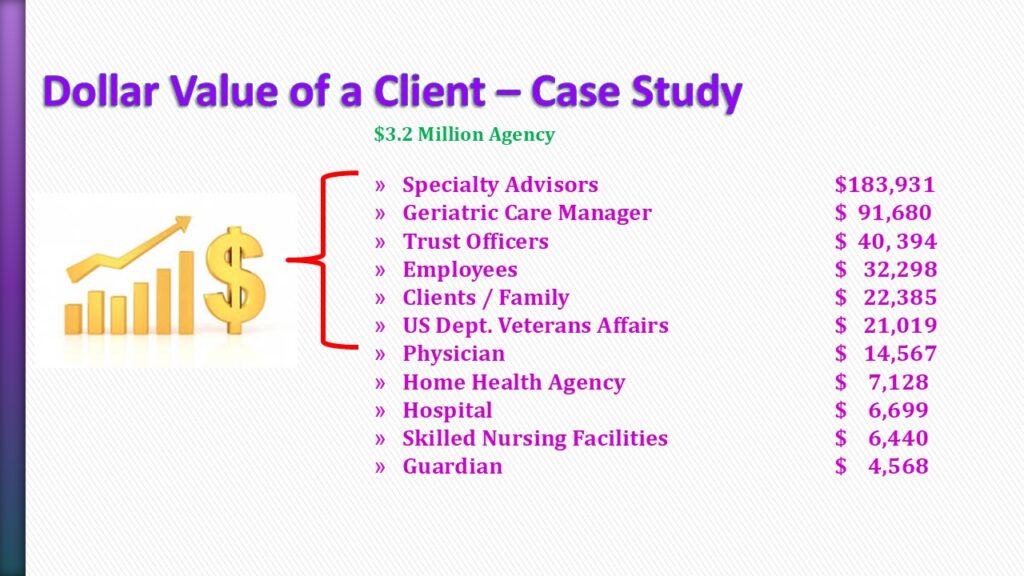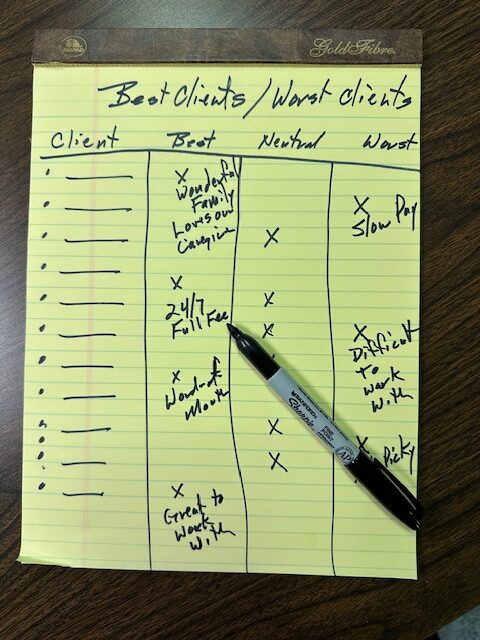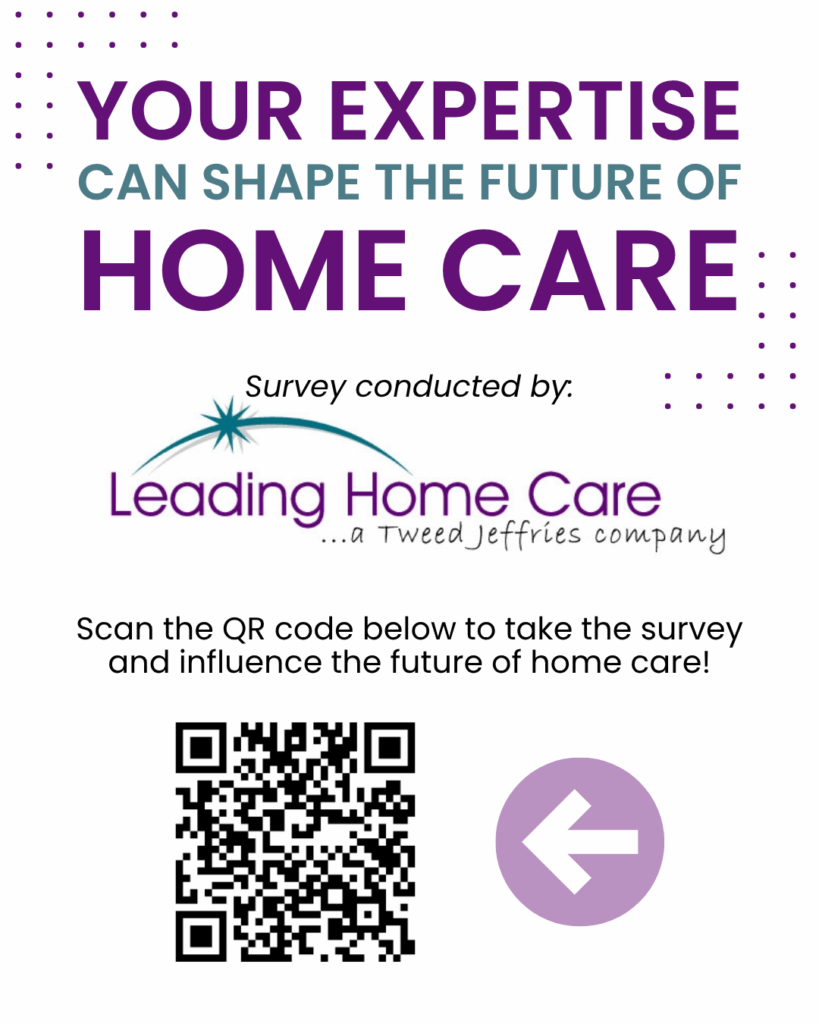Last week I was doing a presentation for Sarah Barker‘s Senior Care Sales Solution Academy. This is perhaps the best training program for business developers in companies that provide in-home personal care for older adults.
Whenever Sarah is doing one of her public academies, or when she is doing a private academy for a specific client, she invites me to join the group virtually to talk about “Six Secrets to Selling Home Care to Your Ideal Client.” This is a presentation based on 25 years for working with Home Care companies in the top tier of our industry, and seeing how the largest, fastest growing, most profitable companies have clearly identified the clients and the Referral Partners who are the best fit for their business in their local marketplace.
I’ve learned that there are two methods you can use to identify your ideal client:
- A detailed analysis using Data Oriented Decision Making to find those clients who bring in the highest dollar value per client.
- A more intuitive process using a yellow legal pad to discuss your Best Clients and Worst Clients, and reach consensus on where you will find your Ideal Clients.
Calculating the Dollar Value of A Client
As you probably know, I’m a bit of a data junkie. I like to look at numbers to help make better strategic decisions. As a matter of fact, some of my friends in the speaking profession have labeled me “Dataman.”
I’ve developed a process to help you use your own company data to analyze all of the clients you’ve served in the past year to identify characteristics of your best clients and to identify the Referral Partners who refer those best clients.
In my presentations, I use one case study that clearly shows that difference in the dollar value of clients by Referral Partner Category. This is not industry data, but a single case study that makes the point.
I encourage all of my clients and Mastermind Members who do this calculation.

Finding your Best Clients and Worst Clients
The other method is much more intuitive. It involves a yellow legal pad, a list of clients, and a conversation about your team member about each client.
In this example, you run down the list of all the clients you have served, and mark them in the column … “Best Clients”, “Worst Clients”, or neutral.
Then you analyze the results and look at the distinction between your best clients and your worst clients. As we have done this dozens of times recently with leaders of Home Care companies, we have found that best clients are:
* Great personal relationships
* Providing the opportunity to do our best work
* Most profitable
* Lowest Hassle Factor
On the other side of the ledger, the worst clients:
* Want to negotiate price
* Can be Very demanding
* Have a High Hassle Factor
* Are Slow to pay
When you find your Best-fit clients, and can spot your worst clients, then you can refine your sales and marketing process, and you can identify you high-potential Referral Partners. The result is that you spend most of your time working with Best-fit clients and you avoid your worst clients. Your business grows, your stress goes down, and your business is much more fun.




